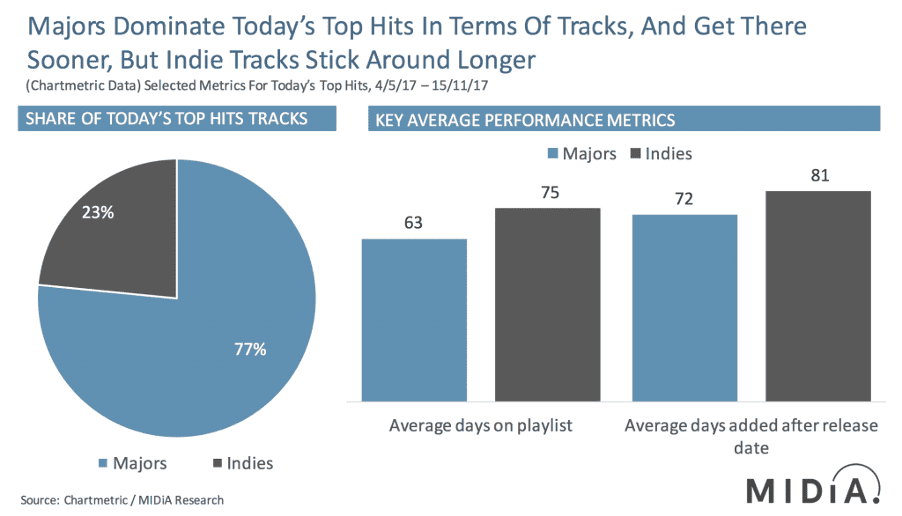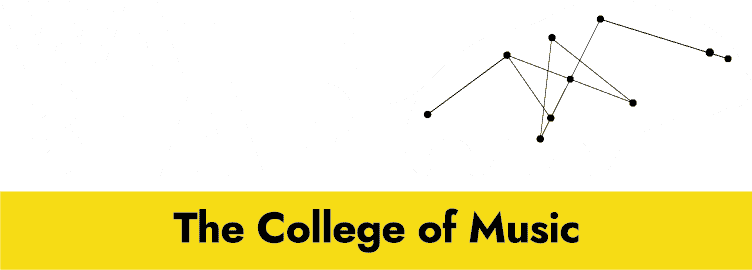
In my previous blog, we examined the circumstances leading to the current state of play in the music industry and the growing divide between labels and self-releasing artists. In this follow up we reflect on the way major record labels reacted to the changing environment and the state of the marketplace now.
The major labels had previously enjoyed a monopoly of the market and displayed a certain amount of arrogance at the changing digital picture. They were caught by surprise and paid a huge price – job losses, shrinking departments (Guy Hands sacked the majority of EMI’s A&R department on acquiring EMI in 2007) and ultimately a need to focus on only signing the one artist that would break through as a mass selling commodity, rather than the ten they would have signed to find them in the past. Their reaction came in a shifted business model where they look to extract more revenue from the artists income to supplement the reduced revenue from sales. So was born the ‘360 Degree Deal’, better termed ‘The Multiple Rights Deal’.
In simple terms, the 360 Degree Deal ensures the label makes money from other activities undertaken by the artist traditionally sitting outside of the remit of the label. Labels used to sell recordings. Simple! The newer structure of deal sees labels take a share of live income and often publishing in return for the investment made. Some argue they are right to do so as the declining revenue from recorded music sales was not enough to recoup large marketing spend. And whilst the label invests in the recording, the artist used to enjoy increased ticket sales and publishing revenue as a result of that investment. As Anne Harrison puts it in ‘Music, The Business’:
A record label may say to an artist - in effect - 'We cannot make enough money just from selling your records to justify the level of advances, royalties and recording costs you want us to pay. We cannot invest the kind of marketing budget this record needs because we can't make enough money from record sales alone. So, if we are going to sign/extend your record deal we can only do so on the basis that we also get a share of the money you make from other activities”. (Harrison, 2017)
Harrison was involved in such deals from very early on, negotiating the (in)famous Robbie Williams multiple rights deal with EMI in 2002. She tells us that “The record company is usually looking for a share of income from things like the artist's... sponsorship and ticket sales and publishing income if it can get it“. Percentages of each area paid to the label vary massively from 10-20% up to as much as 50%. It is important to remember that a standard first record deal at a major label will see the artist on a 15% royalty rate (Harrison. 2017). These deals are now standard fare at major labels and whilst they were heavily contested in their early days, they are now very often the only deals on offer and artists (as well as their managers who of course will see reduced income from commission as a result) have come to accept them.
However as the marketplace changes again, the argument that money cannot be made from the sale of recorded music by labels begins to feel increasingly harder to wear. Data on sales shows increased revenue coming to rights holders of recordings year on year now as they learn the new marketplace and how to work it. Furthermore, major labels dominate the playlists of Spotify and the other streaming sites. As we learned in the last blog, they are the rights holders who own 87% of the content on Spotify (Business of apps, 2020)

Here is a little insight into how they manage it.
“Outside of the Spotify staff-curated playlists, those curated by Filtr, Digster and Topsify have more visibility on the Browse pages than any other playlisting brands, individuals or labels. With these playlists, employees of Filtr, Digster and Topsify can simply log in and add tracks… the majors effectively use these playlists to pump their artists into Spotify-owned algorithmic playlists.
We can apply a similar kind of logic to our own careers. The labels’ logic was to replace declining recorded music revenue streams with multiple revenue streams. The numbers soon add up. As self-releasing artists we can do the same – we need to ensure our house is in order and the pennies that are available from ALL of our activity are being gathered in effectively. The secret now lies in the pence rather than the pounds.
Do your homework. Look at the rates per stream/download. Look at the hidden charges. Think like a label not a self-releasing artist. There are so many things we can do to improve performance and revenue coming in from sales and streaming. Homework and research is essential to develop the best relationships with distributors that effectively maximise activity and subsequently, revenue.
Rather than just registering with PRS to collect royalties for your song exploitation, play a proactive role. Upload set lists, see where the activity is happening, analyse reports, understand what leads to revenue spikes. It is crucial that we monitor our song writing activity and understand the trends and revenue coming in to ensure potential is maximised. If the time is right and the revenue is there you may attract a Music Publisher to get involved. Begin the conversations early – develop your networks in this area.
Are we collecting all revenue streams? There is income related to the exploitation of the recording as well as the song. Is our PPL registration up to date and functional? Think like a label. Who is collecting revenue from YouTube? Is our channel partnered? There are a growing number of high-quality organisations that will manage and collect neighbouring rights for us. Some distributors offer the service, so do some music publishers. Understand what is out there. Homework is key.
As mentioned in the previous blog – maximise D2C (direct to consumer) sales to ensure profit is maximised. The simple equation to understand here is the following:
CWF + RTB = £
Connect with Fans + Reason to Buy = Revenue
Give the fans interesting things to buy, treat them well, allow them to spend as little as they want – but also as much as they want. The true fan will buy everything you offer. Simply put; if you don’t offer it, they can’t buy it!
There are a growing number of revenue streams developing in the digital world. Which ones work for you and are you exploiting them fully? To name but a few; subscription platforms, teaching platforms, sync agencies, etc . Understand your brand and what avenues will work for you.
At the time of writing we are in the depths of COVID-19 lockdown. The live scene has changed forever… we just don’t know quite how yet. It has the potential to place the DIY artist in a powerful position, so watch this space.

- ‘Water bear’ is the common name for a Tardigrade.
- Tardigrades are micro creatures, found everywhere on earth.
- They are the most resilient creatures known.
- They can survive and adapt to their surroundings, even in outer space.
- Their resilience and ability to adapt and survive inspires us in everything we do. We love them.


WaterBear Education Ltd, Hanover House,
118 Queens Road, Brighton BN1 3XG, UK Map
Email: info@waterbear.org.uk
Tel: +44 (0) 1273 726230
WaterBear Sheffield, Unit 4, Gatecrasher,
49 Eyre Lane, Sheffield S1 4RB, UK
Email: infosheffield@waterbear.org.uk
Tel: +44 (0) 1143 992720

WaterBear Education Ltd, Hanover House,
118 Queens Road, Brighton BN1 3XG, UK Map
Email: info@waterbear.org.uk
Tel: +44 (0) 1273 726230
WaterBear Sheffield, Unit 4, Gatecrasher,
49 Eyre Lane, Sheffield S1 4RB, UK
Email: infosheffield@waterbear.org.uk
Tel: +44 (0) 1143 992720
- ‘Water bear’ is the common name for a Tardigrade.
- Tardigrades are micro creatures, found everywhere on earth.
- They are the most resilient creatures known.
- They can survive and adapt to their surroundings, even in outer space.
- Their resilience and ability to adapt and survive inspires us in everything we do. We love them.
